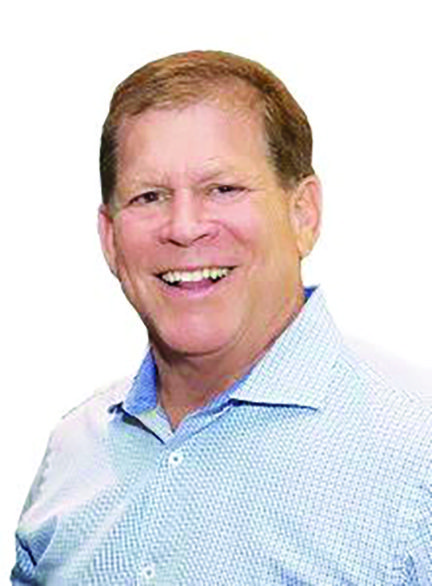|
Getting your Trinity Audio player ready...
|

There’s a special term that political scientists use for a phenomenon espoused by people in a community who quietly, and sometimes not so quietly, find certain things in their neighborhood objectionable. It’s called “NIMBY,” meaning “not in my backyard.”
And from this irrational and often unfair sentiment comes a frequent refrain that the elderly should be settled on the fringes of a community — out of sight, out of mind.
They are the sons and daughters of what we lovingly call the “Greatest Generation,” a term coined by newscaster Tom Brokaw for those elder Americans still among us who were old enough to have lived through World War II. This population of Americans makes up only about 670,000 of our nation’s 332 million residents and every day we lose thousands of them.
They are also the offspring of those Greatest Generation parents. Born between 1946 and 1964, these are the sons and daughters of the “Baby Boomer” generation. But you might know them by another name: they’re Grandma and Grandpa!
Across America there are about 88 million seniors, people who have either retired or are about to. The choices they made and the lives they lived drove the economy for decades. And they are still here. As Boomers age, more and more of them are finding themselves widowed with children often living hundreds of miles away. The reality is they are inevitably going to need help sometime soon — and many of them may soon be moving into assisted living facilities in your neighborhood.
So what is “Assisted Living” after all. It is a collective term that describes multiple levels of care for our elderly family members. In many instances, there are those who are part of the “Independent Living” category. These residents can function nearly normally with ready assistance and access to specific medical services. In most ways, however, they function independently with a little help — and a lot of entertainment as they are typically still quite active!
And then there are those among our aging population who need a higher degree of living assistance. They require a greater level of care, such as day-to-day assistance with certain basic needs. They may have trouble bathing or getting dressed. Perhaps they can no longer cook for themselves or need someone to drop in on them to see if they’ve taken their medications.
In many instances, however, our elderly population needs even more services in the form a “Memory Care” facility, which are necessary for patients suffering from Alzheimer’s, dementia, or other neuro-degenerative issues. Also called Assisted-Living Facilities, seniors moving into “ALFs” are attended to by a workforce of doctors, nurses, and other support staff that is on standby 24/7 to provide the crucial care needed.
On its face, an apartment building filled with elders may not seem to be so controversial, but this is where intergenerational conflicts begin to emerge — in the form of a growing resistance to placing ALFs in residential neighborhoods. Of course, most people will agree that a place should be made for seniors to settle, but few in the generations that follow want them in “their” neighborhood.
Perhaps it’s the fear that sidewalks will become overcrowded by white-haired folks out walking early in the morning or at twilight. Perhaps some existing residents will find it objectionable that local streets might become clogged with drag racing Rascal scooters. Or maybe even the fear that local eateries will be jam-packed with diners drawn out by early-bird specials.
“Uh oh, no no, not in my backyard.”
Shortened to the term “NIMBY,” this phenomenon frequent spawns a refrain that the elderly should be settled on the fringes of a community. Warehouse districts and Industrial parks are a frequently cited as a better place, enomically, to host ALFs. Sadly however, studies show that when seniors are isolated from family and friends and close proximity to the medical and social services they will increasingly need as they grown even older, their longevity and quality of life rapidly diminishes.
The truth of the matter is, an ALF tend to have a low impact on the neighborhoods that surround them, considerably less than other forms of housing. Florida’s new Live Local Act grants generous tax breaks to landlords who provide rentals for residents who are still working and which allow for the highest level of density permitted locally.
And here again the NIMBY syndrome kicks in because they fear that increased density will create strains on traffic and transportation, heightened demand for school services, as well as increased need for police and criminal justice resources.
But the facts stack up differently. ALFs play a vital role in supporting seniors and their families, promoting social interaction, ensuring safety, and security. Equally important is the fact that ALFs contribute to the overall well-being of the community. ALFs have a positive economic impact on a community by creating jobs for healthcare professionals, caregivers, administrative staff, and support personnel. Additionally, ALFs may attract families to relocate to the area if they have elderly relatives who require assisted living services.
As Americans, we all recognize the right to live where we wish and where we can afford it. And no matter how young you are or how protective you are of “your” neighborhood, as a society, we need to open our collective eyes and hearts to the fact that assisted living facilities are good for a community.
Wake up and smell the coffee! ALFs not only provide a better deal for our grandparents and great grandparents, but they are also of great benefit to our local communities.






